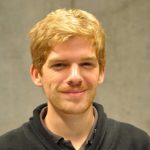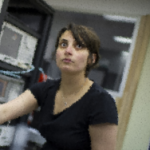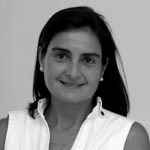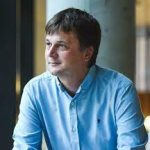
Advisory Board

The AB is composed by International key experts in the areas of phononics that will participate actively in the project discussions, supporting the consortium with their knowledge and experiences in their areas of expertise.

Philip Engel.
Holds a Master Degree in Physics with a focus in Optic/Photonics from the Humboldt-University of Berlin. He performed his Bachelor and Master Thesis in the Nanooptik AG (HU Berlin) under the supervision of Prof. Oliver Benson. Parallel to his research activity at the University, he started working in 2010 for the HOLOEYE Photonics AG, specializing in the field of spatial light modulators (SLM) with liquid crystal on silicon (LCOS). He is in charge of the optical and dynamic simulations of LCOS, as well as the design of experiments for characterisation of the SLMs. As Head of LC-related technologies development he is supervising the design, manufacturing and characterisation of the LCOS. Furthermore he is strongly involved in development activities with industrial customers.

PhD. Sarah Benchabane.
After obtaining a DEA specialty in Optics and Optoelectronics obtained in 2003 at Jean Monnet University in Saint-Etienne, Sarah Benchabane joined the FEMTO-ST Institute to prepare a doctorate in Engineering Sciences based on work dedicated to the study of waveguiding and filtering in phononic crystals, doctorate which she defended in December 2006. At the end of this thesis, she joined the Optoelectronics group of the Institute of Fotonic Sciences (ICFO) in Barcelona as a contract researcher. She worked there for a year on the development of integrated optical components made of periodically reversed lithium niobate. Since January 2008, she joined FEMTO-ST as a CNRS researcher.
Her research activities are mainly focused on the study of the propagation of elastic waves in micro- or nano-structures (phononic crystals and phononic micro- and nano-resonators) and their potential interaction with optical waves.

Prof. Krzysztof M. Abramski
He received the MSc and PhD. degrees in electronics from the Wrocław University of Technology, Wrocław, Poland, in 1971 and 1978, respectively. At that time, he worked at frequency modulation and frequency stabilization of gas laser radiation and many aspects of spectral properties of laser radiation. During 1983–1984, he was a Research Fellow with Quantum Electronics Group lead by Prof. W. J. Wittemeam, Twente University of Technology, The Netherlands. In 1987, he spent half a year with the Department of Applied Physics, Hull University, U.K., and after that for over four years, till the end of 1992, he was a Visiting Scientist at Optoelectronics and Lasers Engineering Group, Heriott-Watt University, Edinburgh, U.K., in the research group of Prof. Dr. Hall. He spent this time investigating different aspects of RF excited lasers (waveguides, slab waveguides, waveguide arrays, phase locking structures).
He returned to Wrocław University of Technology in 1993, where he started creating the Laser and Fibre Electronics Group. He also initiated the teaching program of optoelectronics and optocommunications for students of the Department of Electronics. He is currently a Full Professor at the Wrocław University of Technology. His current work on optical fibre lasers (cw tunable, femtosecond, combs) and microchip solid-state diode pumped includes optical fibre sensors, free-space, and optical fibre communications

Prof. Sylvain Gigan.
Sylvain Gigan obtained an engineering degree from Ecole Polytechnique (Palaiseau France) in 2000. After a Master Specialization in Physics from University Paris XI (Orsay, France), he obtained a PhD in Physics 2004 from University Pierre and Marie Curie (Paris, France) in quantum and non-linear Optics.
From 2004 to 2007, he was a postdoctoral researcher in Vienna University (Austria), working on quantum optomechanics, in the group of Markus Aspelmeyer and Anton Zeilinger. In 2007, he joined ESPCI ParisTech as Associate Professor, and started working on optical imaging in complex media and wavefront shaping techniques, at the Langevin Institute.
Since 2014, he is full professor at Sorbonne Université, and group leader in Laboratoire Kastler-Brossel, at Ecole Normale Supérieure (ENS, Paris). His research interests range from fundamental investigations of light propagation in complex media, biomedical imaging, sensing, signal processing, to quantum optics and quantum informations in complex media.

Vicenta Ferrer Chova.
She is a Telecommunications Engineer from the Polytechnic University of Valencia, and PMD – Program for Management Development from ESADE. She has developed his professional career since 1997 in both technological development companies and business development and transformation of companies in productive sectors.
Since 2012 she has been part of the management team of Nayar Systems, currently exercising the functions of COO as the maximum responsible in the coordination and management of processes, guaranteeing the engagement of all areas. She is a member of the innovation committee for business development and internationalization of the company.

Prof. Alastair P Hibbins
Born in Taunton, Somerset in 1975, he undertook his undergraduate and PhD degrees at Exeter, and has been a member staff since 2000. He was awarded a prestigious EPSRC Advanced Fellowship in 2004. In 2007 he became a Lecturer, and was promoted to full professor at the end of 2016. He is now Director of the Centre for Metamaterial Research and Innovation and the associated EPSRC Centre for Doctoral Training in Metamaterials, and leads the microwave and acoustics labs in the Physics building.
His interdisciplinary team of researchers work on a wide range of fundamental and industry-inspired projects collaborating with many other academics in the department (e.g. Profs Sambles, Ogrin, Hicken, Drs Horsell, Horsley). Currently the team comprises of 6 postdoctoral research fellows and 11 PhD researchers exploring how the energy associated with electromagnetic and acoustic waves and fluid flow can be manipulated using structured materials including metamaterials
